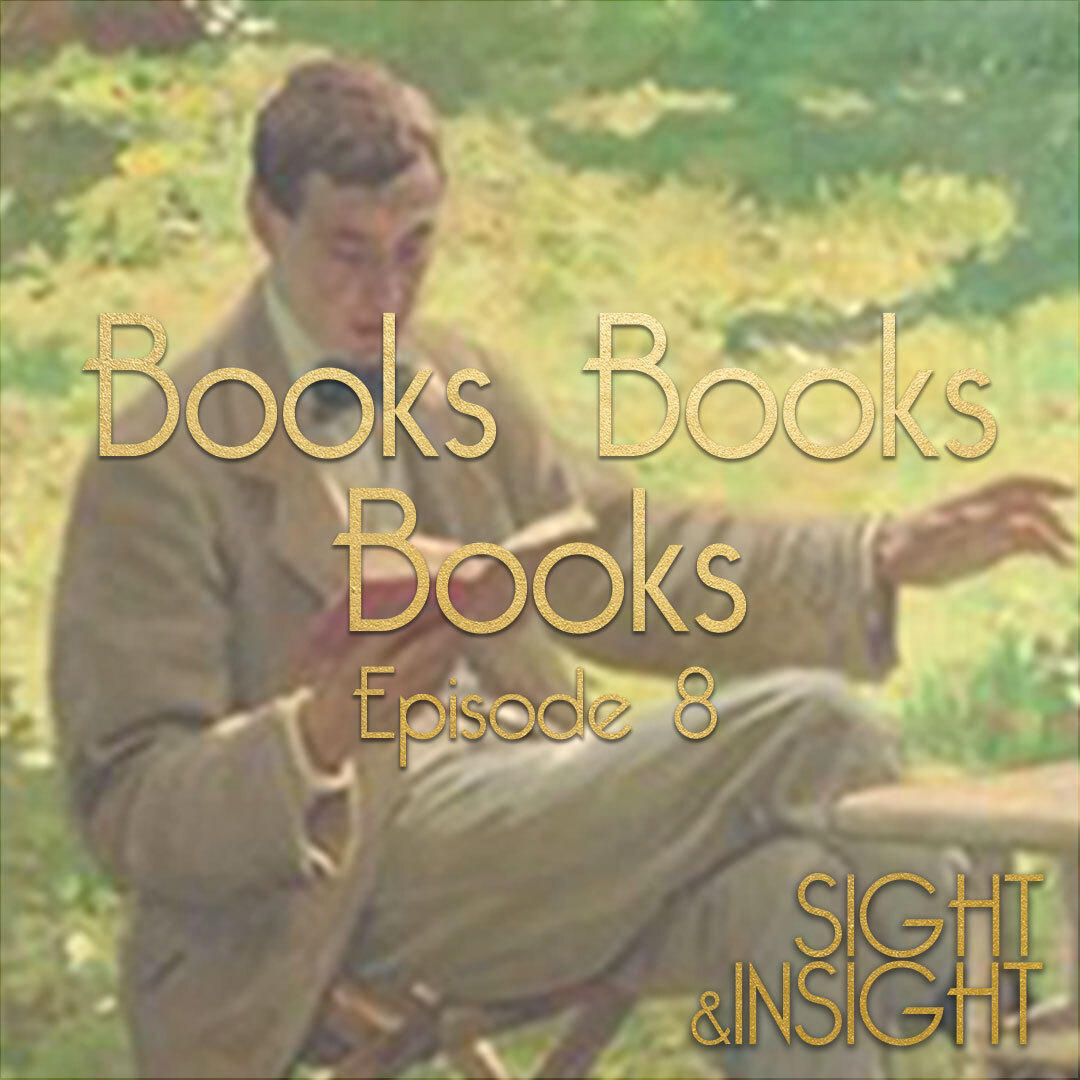Episodes

Tuesday Jun 19, 2018
Episode 12 - Painting in Your Own Backyard
Tuesday Jun 19, 2018
Tuesday Jun 19, 2018
Sorry, folks, we seem to have been experiencing some technical difficulties. We've followed Podbean's advice and uploaded the m4a file again. Hope it plays better than the first version, but that's what you get for working in a thunderstorm!


David - Now Is the Hour (detail) Connie - A Subtle Scent (detail)
Despite thunderstorms and heavy rain, here we are again with Episode 12 - Painting in Your Own Backyard.
From Monet's garden in Giverny to Celia Thaxter's garden on the Isle of Shoals, made famous by Childe Hassam, and all points in between, the garden has long been a source of stimulus and joy to the artist. And even if you don't have water lily pools or lengths of rocky coastline in your backyard, that doesn't mean it can't be a source of inspiration to you.
Some artists like a formal manicured look, others favor the random sowing of seeds and trust in nature and good luck to have a riot of color by summer. Or you could have a more workaday look as seen in Paul Cornoyer's painting, My Studio, East Gloucester, oil on canvas, 18x24, private collection (below).

The possibilities are endless, but sometimes we overlook the beauty of what is right under our noses and search farther afield, sometimes at great inconvenience, to find the 'perfect composition.' Oftentimes, we just need to add the odd note, or the odd model, to make our back yards perfect, as in 'Gossiping Geishas,' by David Montgomery, (private collection, below) executed during one of David Curtis' Figure in the Garden summer classes.

So put away your maps and forget about driving half a day to select your next composition, and look closer to home for overlooked vistas or intimate corners of the shrubbery. Go ahead - paint in your own back yard. In fact, send us some of your efforts, and we'll post our favorites!
Until next week, it's goodbye from me, Judy Curtis, and it's goodbye from them, David Curtis and Connie Nagle.

Monday Jun 11, 2018
Focusing on Color
Monday Jun 11, 2018
Monday Jun 11, 2018

Get into the habit of doing what you see, not what you know. Human reason cannot foresee the accidents of out-of-doors.
— Charles Hawthorne


Greetings, Art Lovers, and welcome to another episode of Sight & Insight. And don't worry, you're not going crazy, we just flip flopped the last two recordings, so we are briefly put of sequence. This is just to keep you on your toes and see how many of you are really listening! We should be back on track next week.
This week, however, we are discussing color; one of the most important aspects of the painter's craft. Judy begins with Newton's contribution to color theory, and is quickly followed up by artists and teachers, Connie and David, weighing in on what color means for the painter in order to create a better effect, especially when working out of doors.
Apologies for the sound quality this week; we had one or two technical hitches, but hopefully the passing airplane won't detract too much from the scintillating conversation.
Until next week, it's goodbye from Judy, and happy painting, from David and Connie....



Monday Jun 04, 2018
Episode 10 Gertrude Fiske: American Master
Monday Jun 04, 2018
Monday Jun 04, 2018


Join David, Connie, and Judy as they discuss their visit to the Gertrude Fiske American Master exhibition at Portsmouth Historical Society – Discover Portsmouth – 10 Middle Street, Portsmouth, NH 03801.
From the back cover of the catalogue:
The combination of Fiske’s originality and selective eye, as well as her broad brush manner and audacious color, helped her become of America’s most individualistic painters, and raised the bar in the genre of American Impressionism. — Judith A. Curtis
Fiske spent seven years training at the Boston Museum School with Tarbell, Benson and Hale, while also studying with Charles Woodbury at his summer school in Ogunquit, Maine. A founding member of the Guild of Boston Artists, Fiske’s work covers the gamut of finely worked portraits to lusciously colored plein air paintings of Portsmouth and the surrounding seacoast.

An extensive catalogue – Gertrude Fiske: American Master with Sisters of the Brush & Palette and Seacoast Masters Today, Softcover, 8¼ x 9, 108 pgs, color & bw, ISBN 978-0-915819-47-8. $35.00 – accompanies the show, featuring all 66 works by Gertrude Fiske.
Judy, David and Connie were awestruck at the color and consistent quality of Fiske’s work – hence Judy’s confusion at the beginning of the episode – or perhaps it was the lack of caffeine. No matter, hopefully she will be suitably coherent when she appears as one of the speakers at the Gertrude Fiske: Her Art and Her World, Symposium I on Saturday, June 16, 9am-3pm, coffee, refreshments, and lunch provided. Call ahead for tickets.


Until next week, when the trio will be discussing color – paint on!
Connie, Judy and David

Monday May 28, 2018
Episode 9: In Focus: The Sight & Insight Workshop
Monday May 28, 2018
Monday May 28, 2018




Join this intensive 5-day workshop that offers a dramatic change in the way you develop your outdoor paintings!
We are inviting you to experience something new! A buried treasure and a release from the familiar ways you paint outdoors.
Design is an elegant ordering and invention that equals creation. This workshop gives you a chance to experience both! Are you up for the challenge?
When: June 18-22, 2018
Where: Essex Greenbelt, 10-3 pm
With: David Curtis and Lorwen Connie Nagle
Tuition: $500.
To sign up, or request further information please call
(978) 283-4135, or email davidpcurtis@comcast.net
or visit the webpage davidpcurtis.com


Monday May 21, 2018
Episode 8: Books, Books, Books
Monday May 21, 2018
Monday May 21, 2018
"Art is not an amusement, nor a distraction, nor is it, as many men maintain, an escape from life. On the contrary, it is a high training of the soul, essential to the soul's growth, to its unfoldment."
- Lawren Harris

Welcome to Episode 8 of Sight & Insight, the podcast for all things Art. Today Judy, David and Connie discuss their favorite art books and how they can increase the artist or art lover's understanding practice and understanding of the Fine Arts.


A.J. Munnings Reading by Harold Knight
Harold Speed, Sir Alfred East, Robert Henri... just a few of the names these three friends will be discussing, not to mention Judy's book on the history of the Rocky Neck Art Colony 1850-1950. How to books, artist biographies, exhibition catalogues are also a big topic of conversation. Tune in and find out David and Connie's favorite books and see if you agree. Your favorite wasn't mentioned?! Let them know. There's sure to be a similar discussion in the future and sharing ideas is the best way to share knowledge.
“Painting is poetry that is seen rather than felt, and poetry is painting that is felt rather than seen.” - Leonardo da Vinci


Until next week, happy painting....

Monday May 14, 2018
Sight and Insight - Episode 7: Memory Painting
Monday May 14, 2018
Monday May 14, 2018

"It is all very well to copy what one sees, but it is far better to draw what one now only sees in one's memory. That is a transformation in which imagination collaborates with memory." - Edgar Degas (1834-1917)
Read more at: https://www.brainyquote.com/quotes/edgar_degas_393298
This week, Connie, David and Judy talk about memory painting. How does it help the outdoor artist? Is the memory trustworthy to work from, or is it better to have a photograph? Is photographic color honest? Or should the artist work at training his or her memory to remember color notes, shapes, masses and pictorial gestures? Listen in to the convwersation and feel free to drop the crew a message if you have something to add.
"A cultivation of the taste, by a proper degree of attention to literature and the fine arts, elevates the mind above trivial cares and conventional jealousies, giving it a vigorous independence, and a fund of inexhaustible resources within itself. They present a means of quiet enjoyment, that gently exhilerates the spirits, and produces a cheerful state of mind highly conducive to health."*
*Huntington, D L. Manual of the Fine Arts. Vol. 20, A. S. Barnes & Company, 1874, p. 23
So, before you grab your paints, canvas and easel, how's your memory?!



Monday May 07, 2018
Sight & Insight Episode 6 Pleine Aire Painting
Monday May 07, 2018
Monday May 07, 2018

Welcome to episode six of the Sight & Insight podcast. Join David, Connie and Judy as they talk about the art of painting out of doors. As Sorolla said, "As far as outdoor work is concerned, a studio is only a garage; a place in which to store pictures and repair them, never a place in which to paint them."
Artists have been working out of doors since the time of John Constable (1776-1837) the English Romanticist, who was sketching in the Lake District as early as 1806. The Barbizon School, located on the edge of Fountainbleu forest, near Paris, also championed the idea of developing a landscape painting via direct observation, attracting painters to the site such as Theodore Rousseau (1812-67) and Jean-Francois Millet (1814-75) in the late 1840s as well as Charles-Francois Daubigny (1817-78) and Constant Troyen (1810-65). But it was Claude Monet (1840-1926) and his Impressionist colleagues who perhaps garnered the most attention with the idea of painting outdoors, expressing the artist's perceptions of nature as laid out before him.
Hear Connie and David, both outdoor painters and teachers discuss the pros and cons of working in all weather to capture the momentary effect of light hitting their subject in Nature, while Judy tries to keep them in order. As David says, "You don't always what you want the first time around, but you will have had a wonderful morning or afternoon working out of doors, observing nature and the flora and fauna of your location. And these observations will make you all the more prepared for next time you go out there."
For Connie, having a good color theory before you even go outdoors is a big help for the student artist. Read Harold Speed, and other great painters, such as Lecoq de Boisbaudran who developed Light and Color Theory to assist the artist to help understand the principle in conjunction with a painting class or workshop
Artist's today often use technology to assist them paint images of the outdoors within the confines of the studio, but as Augustus W. Dunbier (1888-1977) said, "If you can't paint it with all of this hanging out there at the end of your nose, how do you expect to do it better back in your basement?"
But supposing you can't get outdoors to paint because of hayfever, or pouring rain? Then those observations already made outdoors will help you when you are confined to the studio. Tune in next week for Episode 7: Memory Painting....



Monday Apr 30, 2018
Sight and Insight - An Art Education
Monday Apr 30, 2018
Monday Apr 30, 2018


Join Connie, David and Judy for their fifth podcast as they discuss the pros and cons of art education
With more than 50 years of painting experience between them, and some 25 years of teaching, David and Connie have teamed up to offer their Sight and Insight to help you become a better painter.
What kind of art education will help you? Gertrude Fiske spent seven years at the School of the Museum of Fine Arts (SMFA), Boston, to throughly ground herself in her chosen subject; Polly Thayer dropped out in her second year because she felt it wasn't helping her do what she wanted to do. A. T. Hibbard split seven years between the Mass Normal Art School and the SMFA. So what does a student of the arts really need to know? Tune in a hear what the Magnificent Three have to say, and see if you agree. If you don’t, let them know. Discussion of the arts is a wonderful thing; stimulating and motivating. Let’s have more of it.

Charles Gleyre, (1806-1874) Lost Illusions,c. 1865-67, o/c 34.1 x 39.3, The Louvre, Paris
“Color and design together,” David says, “can create emotional feelings to the viewer,” but how to find the right color and the right design? That where Sight and Insight comes in…!
Or, as Leonardo said:
482. A WARNING CONCERNING YOUTHS WISHING TO BE PAINTERS.
Many are they who have a taste and love for drawing, but no talent; and this will be discernible in boys who are not diligent and never finish their drawings with shading.
The course of instruction for an artist (483-485).
483. The youth should first learn perspective, then the proportions of objects. Then he may copy from some good master, to accustom himself to fine forms. Then from nature, to confirm by practice the rules he has learnt. Then see for a time the works of various masters. Then get the habit of putting his art into practice and work."
— Leonardo da Vinci (1452-1519)
The Notebooks of Leonardo Da Vinci by Leonardo da Vinci
Chapter IX

Monday Apr 23, 2018
Sight and Insight - What is Art?
Monday Apr 23, 2018
Monday Apr 23, 2018
A word from our producer...

... or not. Maybe next week.


What is Art? A lofty question indeed! Join Lorwen 'Connie' Nagle and David P. Curtis, both experienced plein air oil painters and teachers, and Judy Curtis, art writer and historian, as they get to grips with the question of 'What is Art?' According to Beverly Sills, the late, great vibrant soprano once described as the 'All-American Diva,' "Art is the signature of civilization," while French sculptor, Auguste Rodin, prefers, "Art is contemplation. It is the pleasure of the mind which searches into nature and which there divines the spirit of which Nature herself is animated." Tune in to find out what David, Connie and Judy have to add to the mix.

Leonard da Vinci (1452-1519) Madonna of the Rocks (1483-1486) Oil on panel, 78.3 x 48 in. The Louvre, Paris
Hear, too, about what these three amigos have been up to recently. Judy talks about the preview opening of Harold Rotenberg: An American Impressionist' now on view at the Cape Ann Museum, through June 17, 2018.
Meanwhile, David and Connie share their adventure down to the University of Delaware where they explored the Charles Allan Winter Papers and came up with some surprising insights!

Charles Allan Winter (1869-1942), Under the Tree, oc 24 x 20 in.

Monday Apr 16, 2018
Sight and Insight - Aesthetics
Monday Apr 16, 2018
Monday Apr 16, 2018


Join Lorwen 'Connie' Nagle and David P. Curtis, both experienced plein air oil painters and teachers, and Judy Curtis, art writer and historian, as they sit around the coffee table to talk about aesthetics. Together they cover the gamut of topics interesting to art lovers and artists alike. Or, at least, they hope so!
Pick up your own coffee and then sit back and enjoy the conversation. If you disagree, let them know. As David's father, art teacher and marine artist Roger W. Curtis, once said, "Few facts are sure and opinions are debatable...."

Raphael, The School of Athens, 1509-1511, fresco, 200 x 300 in., Apostolic Palace, Vatican City
"Design is a way of life, a point of view. It involves the whole complex of visual communications: talent, creative ability, manual skill, and technical knowledge. Aesthetics and economics, technology and psychology are intrinsically related to the process."
— Paul Rand
Read more at: https://www.brainyquote.com/quotes/paul_rand_542775?src=t_aesthetic

